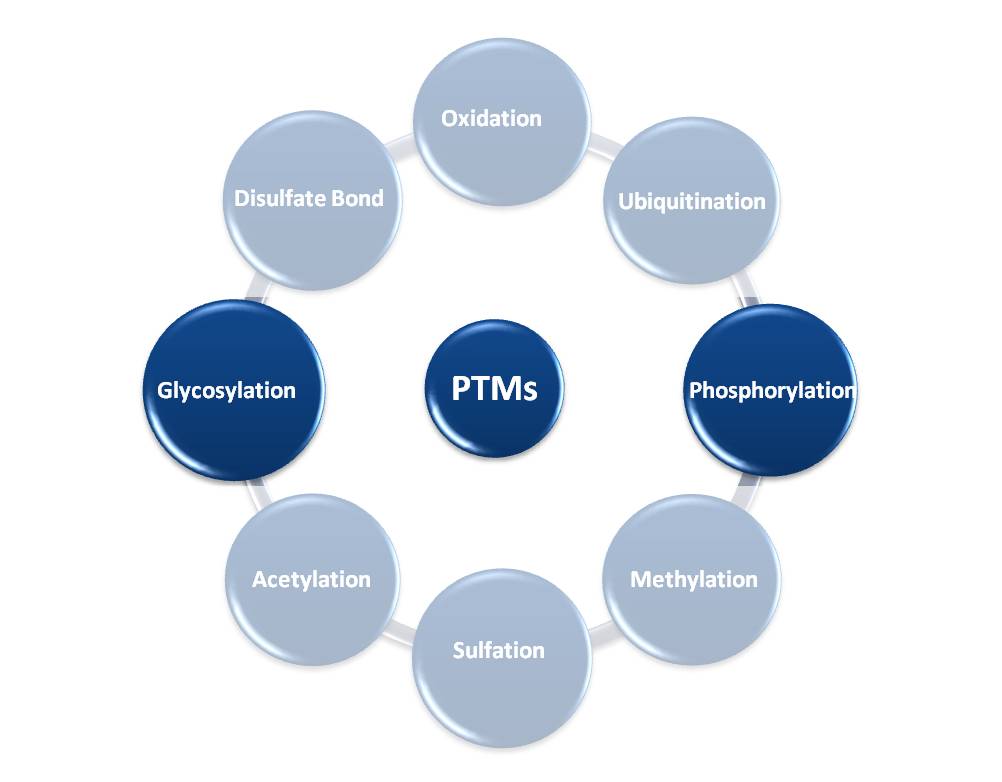Introduction: Post Translational Modification
Post translational modifications (PTMs) of proteins are critical for biological activity of most proteins and increase the functional diversity of the proteome via attachment of functional groups, such as carbohydrates or phosphates.

Serum contains many glycosylated and phosphorylated proteins which can be targeted specifically using a combination of chromatographic and mass spectrometry techniques.
Glycosylation
Glycosylation has effects on a myriad of biological pathways including regulation of cell-cell and cell-matrix recognition, cell adhesion, and inter- and intra-cellular interactions. The majority of human proteins are glycosylated and are easily accessible for analysis in serum. Serum glycans have been widely used over the past few decades as diagnostic and prognostic markers for various diseases including cancer, inflammatory diseases and schizophrenia. In the search for new and more reliable biomarkers for neuro-psychiatric disorders, we are carrying out comprehensive analyses of the attached carbohydrate moieties. This has lead to the identification of several N-glycans that can distinguish first onset, un-medicated schizophrenia patients from healthy controls.

Phosphorylation
Phosphorylation is a ubiquitous post-translational modification known to be important in regulation of many cellular processes, including cell growth, apoptosis, differentiation, signal transduction and transport. We recently showed that phosphorylated proteins can be detected in the serum of schizophrenia patients and phosphorylation changes occur on some proteins with no overall change in the corresponding protein levels. We have also shown differential phosphoproteomes associated with pharmacological interventions in schizophrenia patients. Olanzapine treatment of schizophrenia patients induces alterations in serum protein phosphorylation patterns. Thus, phosphoproteomics can deliver additional “theranostic” information beyond the existing paradigm of simply identifying changes in protein abundance.
